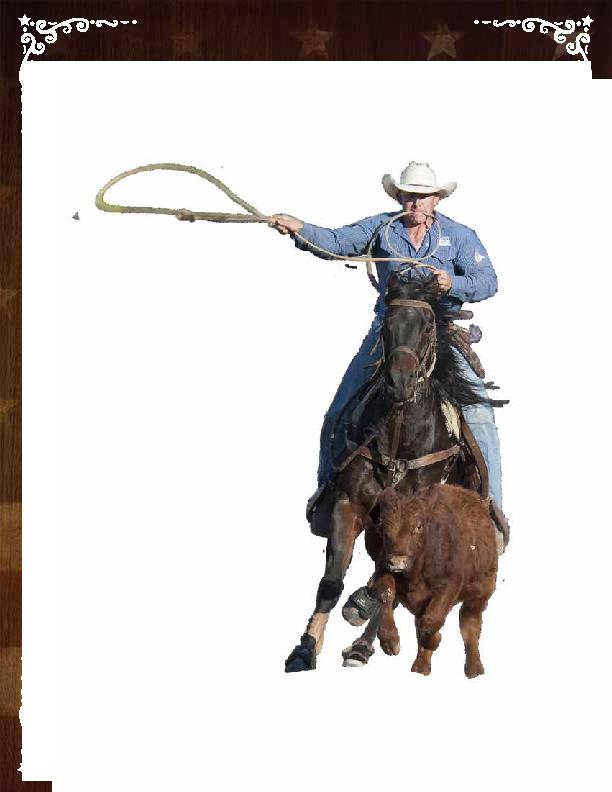
When calves are sick or injured, cowboys had to rope and immobilize
them quickly for veterinary treatment. Ranch hands prided them-
selves on the speed with which they
could rope and tie calves, and they
soon turned their work into informal
contests. As the event matured, being a
good horseman and fast sprinter became as
important to the cowboy as being quick and
accurate with a rope.
opens into the arena. The calf gets a head start that is deter-
mined by the length of the arena. One end of a breakaway
rope barrier is looped around the calf's neck and stretched
across the open end of the box. When the calf reaches its
advantage point, the barrier is released. If the roper
breaks the barrier before the calf reaches its head start,
the cowboy is assessed a 10-second penalty.
calf. The cowboy then dismounts, sprints to the calf
and throws it by hand- a maneuver called anking.
If the calf is not standing when the cowboy reaches
it, he must allow the calf to get back on its feet
before anking it. After the calf is anked, the
roper ties any three legs together with a pigging
string- a short, looped rope he clenches in his
teeth during the run.While the contestant is
accomplishing all of that, his horse must pull back
hard enough to eliminate any slack in the rope, but
not so hard as to drag the calf.
run is completed. The roper then remounts his
horse, rides forward to create slack in the
rope and waits six seconds to see if the calf
remains tied. If the calf kicks free, the roper
receives no time.